Ours is a mixed family. My husband is 100% Irish and was raised Catholic. I’m 100% Eastern European, raised Jewish. As a result, we celebrate the major holidays of both religions, albeit agnostic style: a Christmas tree, the menorah for Chanukah, jelly bean hunts for Easter, and a traditional dinner for Rosh Hashana. Yom Kippur, the Day of Atonement, I reserve for myself—as I’m the only one who cares to fast.
Then there’s Passover, a holiday that lasts for seven days and marks the freeing of the Jews from slavery in Egypt. In recent years the Seder dinner, which marks the beginning of the holiday, has been adopted by many faiths as a symbolic repudiation of oppression and a celebration of freedom.
For a service that dates back thousands of years, this one is always topical, hence its increased cross-cultural popularity. Sadly, there are always tyrants, from Pharaoh to Putin. And yet, there is much in our lives to celebrate. The Seder service calls on us to remember, to discuss, and to feast.
As is said about most Jewish holidays, but particularly Passover: we suffered, we talked about the suffering, let’s eat.
How to Plan a Seder
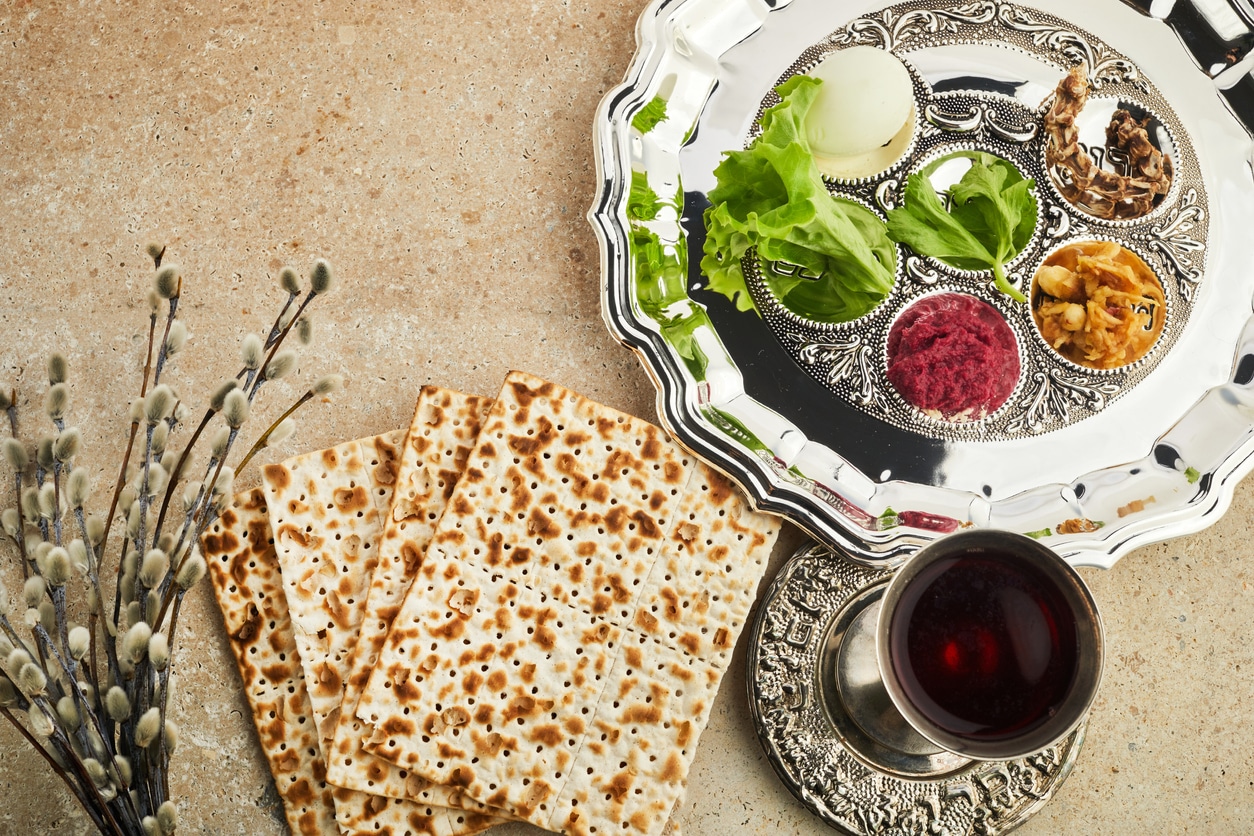
Planning a Seder can feel overwhelming, particularly if you’re doing it alone or for the first time. Decades ago, as is tradition, I tried to do it in a day. I’d take the day off from work, the house would be (theoretically) immaculately clean, then I’d cook the multicourse meal from scratch for ten or twelve, set the table, lead the service, serve the food…and plotz. I don’t do the clean-up; that’s my husband’s territory, thank heaven.
Now I make lists and spread the work out over a week, so when the day rolls around, I’m relaxed. Well, it doesn’t hurt that our daughter can handle the silver polishing, ironing, table setting, and centerpiece production while also serving as sous chef and waitress. Tip: have a daughter if you can.
Passover Traditions
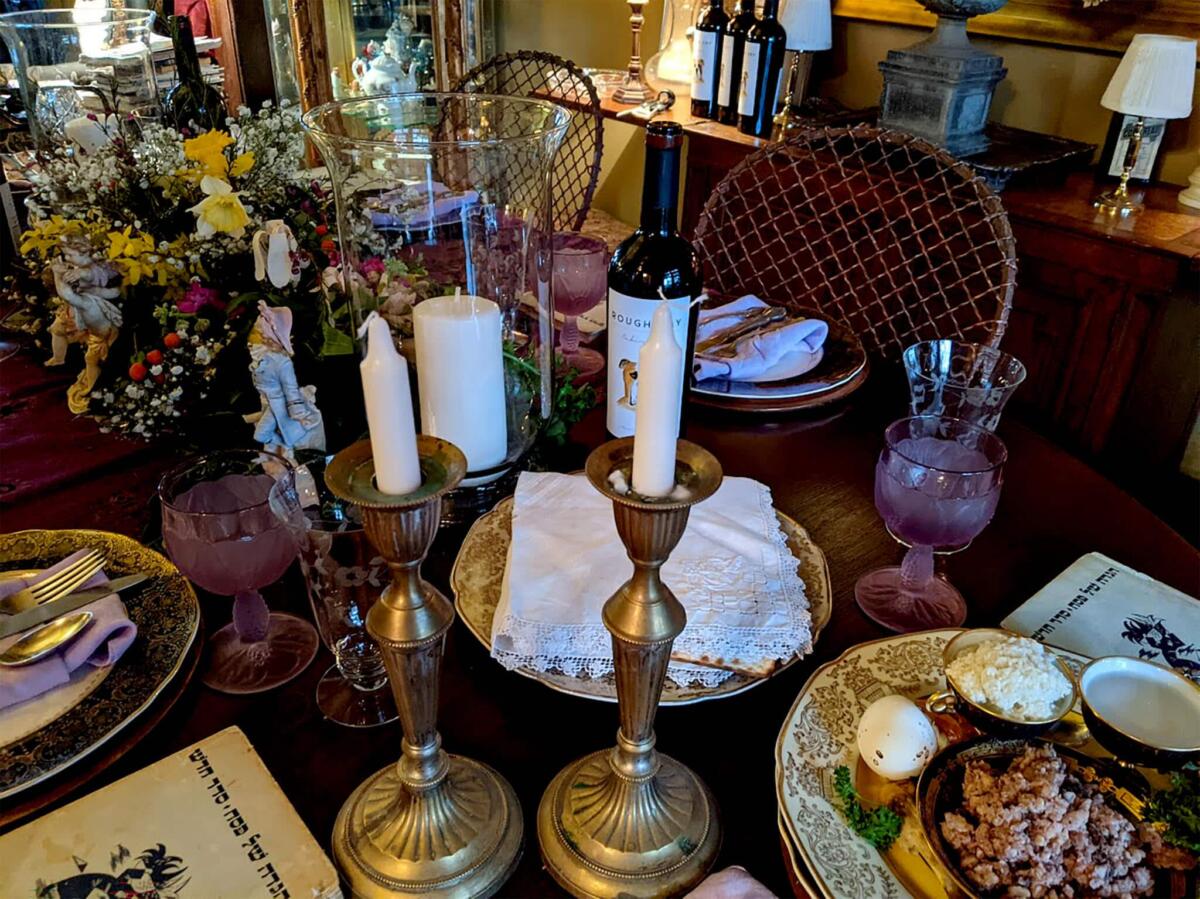
I’ve been doing this for so many years that it’s tough to remember when it was hard. But I most certainly know what everything is supposed to taste like. And while I still do it all from scratch to honor my mother and father and the generations before them who handed down the recipes, there are ways to cheat and take shortcuts. I promise that even your grandmother would scarcely taste the difference!
What I give you here is a variation of my Seder dinner, one that is fairly typical of most American Jews that share my Eastern European, or Ashkenazi, roots. A couple of recipes and many handy substitutions and cheats are included.
Do note! This is a kosher-style meal, meaning I don’t serve or use dairy products in the preparations. For reason, lost in the midst of time, more orthodox Jews (and Muslims) never combine meat and dairy at a meal. Possibly for digestive reasons. As our traditional cooking is always heavy, this might account for the longevity of the race.
And, during Passover, we are confined to matzoh-based products—no flour. As you can imagine, this makes for some less-than-wonderful desserts. But hey, they’re still sweet.
The multi-course feast that follows starts with matzoh ball soup, then gefilte fish, and then the main course of a brisket of beef, roasted asparagus, mushrooms and onions, apple sauce, and latkes. Latkes (potato pancakes) might be unorthodox, as they’re usually served at Chanukah, but I’ve never had any objections. And dessert is usually a sponge cake and macaroons, sometimes strawberries dipped in chocolate.
Don’t forget the wine, a lot of wine—also sparkling water for the designated drivers and non-drinkers.
Welcoming Guests
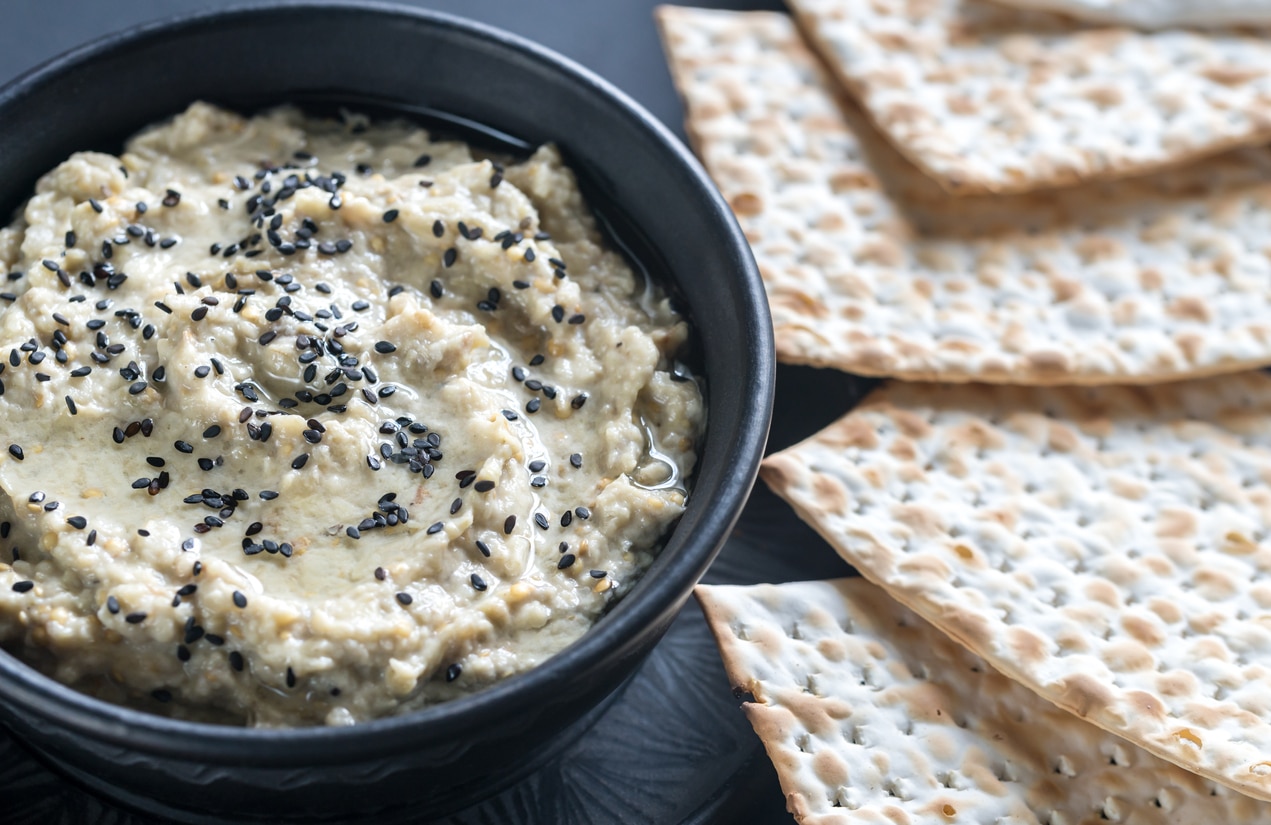
If you’re serving cocktails, serve them alongside chopped liver (buy at a Jewish deli) or kosher hummus and matzoh crackers, maybe some olives, celery, and carrot sticks. This should lead to candle lighting and the time to gather round the table. Keep it light, there’s a lot of food to come.
FIRST COURSE
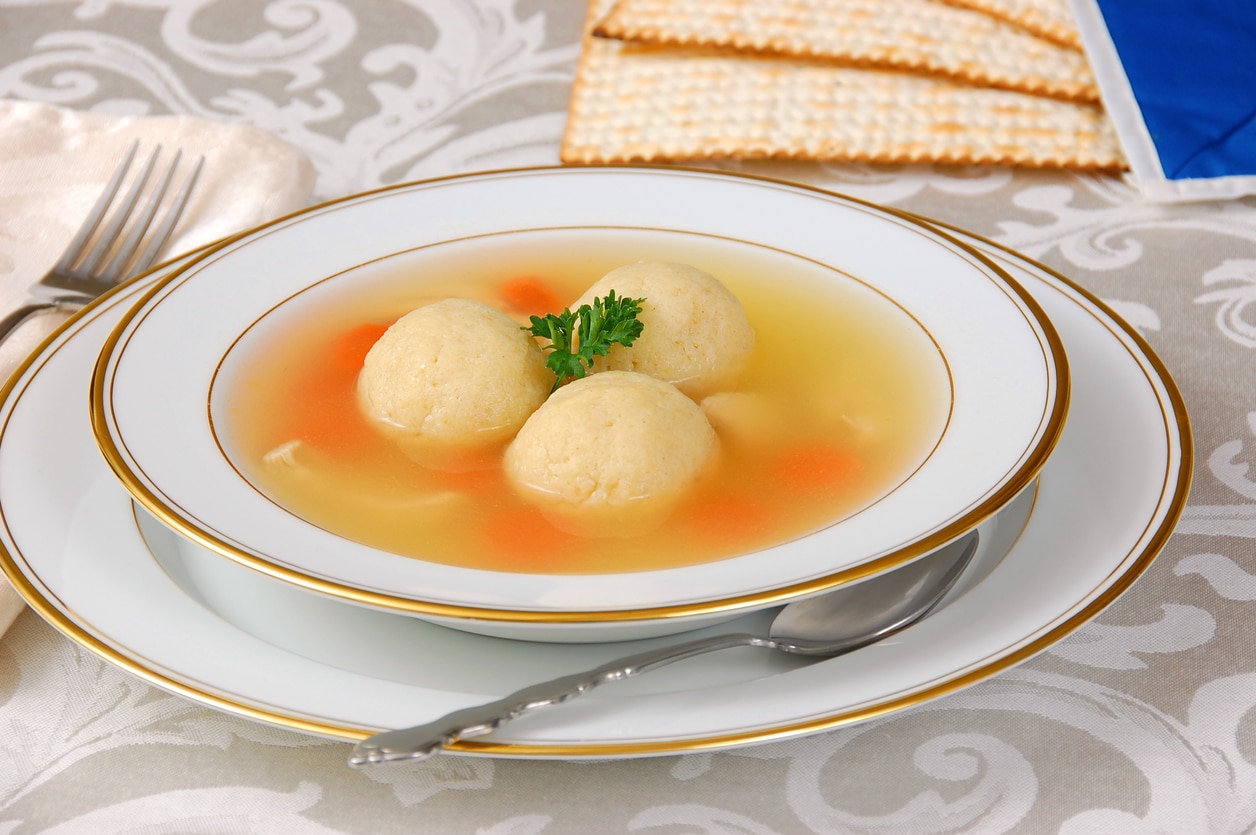
Matzoh Ball Soup: I make great chicken soup. I also make lighter-than-air matzoh balls. But you know what? You can also just buy a couple of cans or containers of good-quality chicken broth. After all, what is this soup but a vehicle for matzoh balls? For the balls, I am SHOCKED to say that Streit’s makes a delicious dupe for homemade matzoh balls. I didn’t believe it until my daughter introduced me to the mix last year. If you have a little chicken fat, which I’ll explain in a bit, use it instead of the oil they call for. The flavor will be greatly enhanced.
Cook matzoh balls in a separate pot from the soup. The balls absorb the liquid, tripling in size, leaving you with little or no liquid to serve. Add bouillon cubes or Better than Bouillon to the water to enhance the flavor.
NOTE: Chicken fat, also known as schmaltz, gives a particularly delicious flavor to matzoh balls. Streit’s, as I’ve said, is excellent, but they call for oil. Chicken fat will take it to the next level. If you don’t have a butcher that will give you a quarter pound or so, buy a whole chicken or chicken parts, remove whatever fat is visible, pull off the skin and cut it up, add a thinly sliced small onion, and melt over a low flame. Strain and put in the fridge. Use as you would oil.
SECOND COURSE
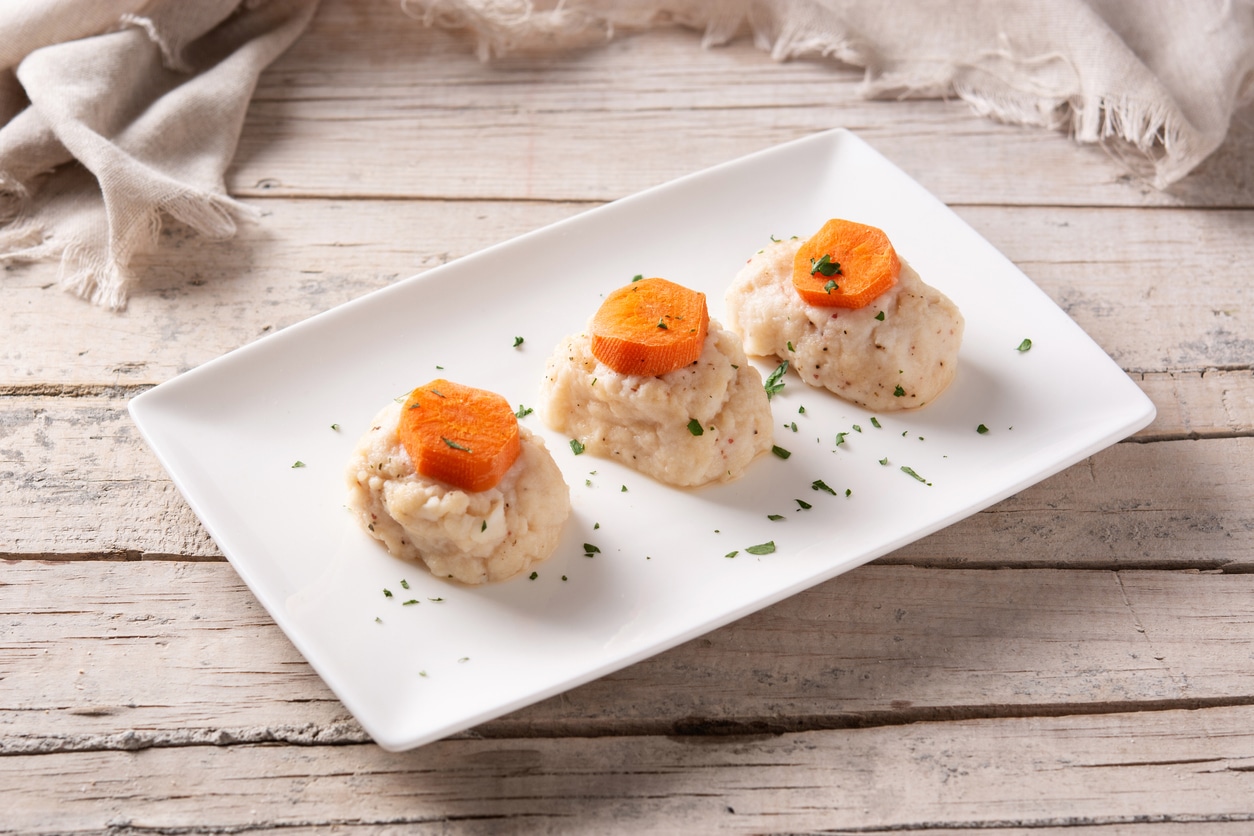
Gefilte fish with Horseradish: Buy a jar of Mother’s Gefilte Fish. The whitefish and pike version in jellied broth is my preference. My mother made this from scratch once—the house stank for a week. I’m also not going to give a doctoring-it-up recipe because you probably won’t like it anyway; it’s such an acquired taste…So just chill it, take it out of the bottle, slice it, and put it in a serving dish, pouring the jellied liquid over the top. Garnish with bits of parsley. Pass it around the table with horseradish—buy a jar of Kelchner’s if you can. It will knock your socks off as fast as the stuff you grate yourself.
Note: Horseradish is also on the Seder plate that sits in front of the host and includes a number of symbolic foods found listed in the Haggadah, your prayer book. It’s also delicious with brisket of beef, the main course.
MAIN COURSE
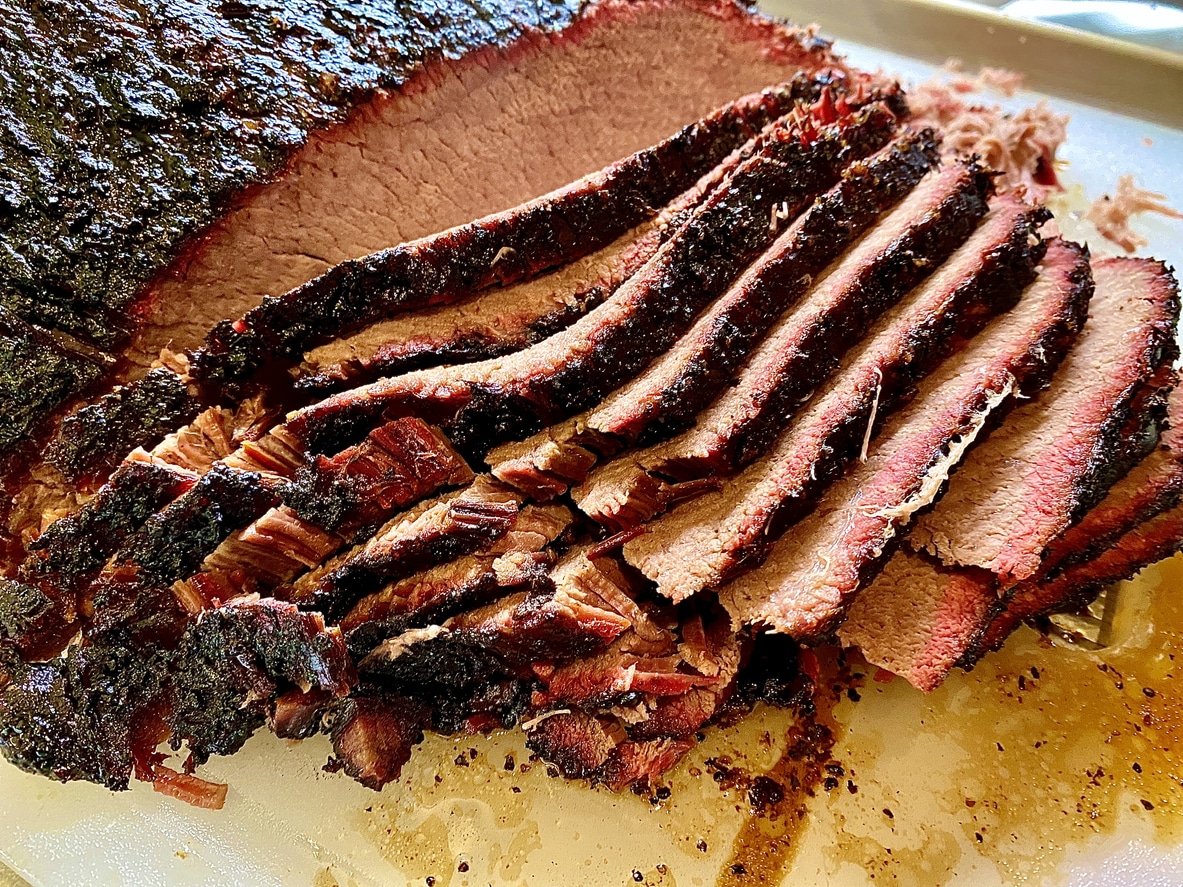
To give the dinner a solid touch of homemade, I’m including two full recipes, one for brisket of beef and the other for latkes, which you might hold onto for Hanukah when they’re traditionally served. I trot them out for every holiday as they’re a delicious bit of crunch alongside largely soft food. Mine have been known to make grown men cry.
Brisket of Beef
- *6-7 lb brisket
- 2 large onions sliced very thin
- 2 stalks of celery, chopped
- 1 to 2 cloves garlic, chopped
- 1 head of parsley
- 1 tsp thyme
- 1 small bay leaf, crumbled
- Paprika
- Salt & pepper
- Dry red wine or beer
- Beef stock
Warning: You might need to buy a roasting pan for this! Check your tools early.
Preheat oven to 450.
- Rinse meat, and wipe with a paper towel. Sprinkle with salt and pepper and paprika. Put in oven. Brown on one side, flip and brown on the other. Takes about 40 minutes. (You can also do this part on top of the stove if you have a frying pan big enough. It won’t take quite so long).
- While meat is browning, finely chop onions, celery, parsley, and garlic. I know many people, including some excellent cooks, that swear by Lipton’s Onion Soup. Please no! Try it this way, and you won’t go back…
- When meat is browned, put the vegetables on top and brown in the oven for another ten minutes (If you browned meat on the stovetop, move it to the roast pan and then heap vegetables on top).
- Add parsley, bay leaf, and thyme, and add a mixture of wine and stock OR a couple of bottles of beer (which tenderizes) to completely cover the meat and veggies.
- Cover the roasting pan with a lid (or tightly sealed tin foil) and REDUCE TEMPERATURE to
- 325 degrees. (NOTE: Don’t worry if your roasting pan is too small to lay pieces side by side; it’s ok to double them up as long as they’re covered with liquid)
- Roast for approximately 3 ½ hours, until tender, when you stick it with a fork. Taste the broth, you might want to add a little more salt and pepper if it seems bland. Let cool on the stovetop for an hour before putting it in the fridge to rest overnight.
Serving: Sometime in the afternoon, before the Seder, remove meat from the fridge and skim off the fat that has accumulated on the surface. Remove the meat from the pan (don’t throw out the gravy!) and slice against the grain (sorta sideways). Put it back in the pan and return it to the fridge.
An hour or so before the meal (or as cocktails are being served), return the meat to the oven COVERED at 325 degrees.
Slicing cold meat is a snap! This took me 30 years to discover.
*If the slab of brisket you get (6-7 pounds should serve 10, considering the rest of the meal) is in one piece with a layer of fat between top and bottom, you will need to separate the two and trim off most of the fat (or talk to the butcher about doing this for you—they usually will). Some people prefer the pieces connected, but I think it’s too fatty).
Potato Pancakes
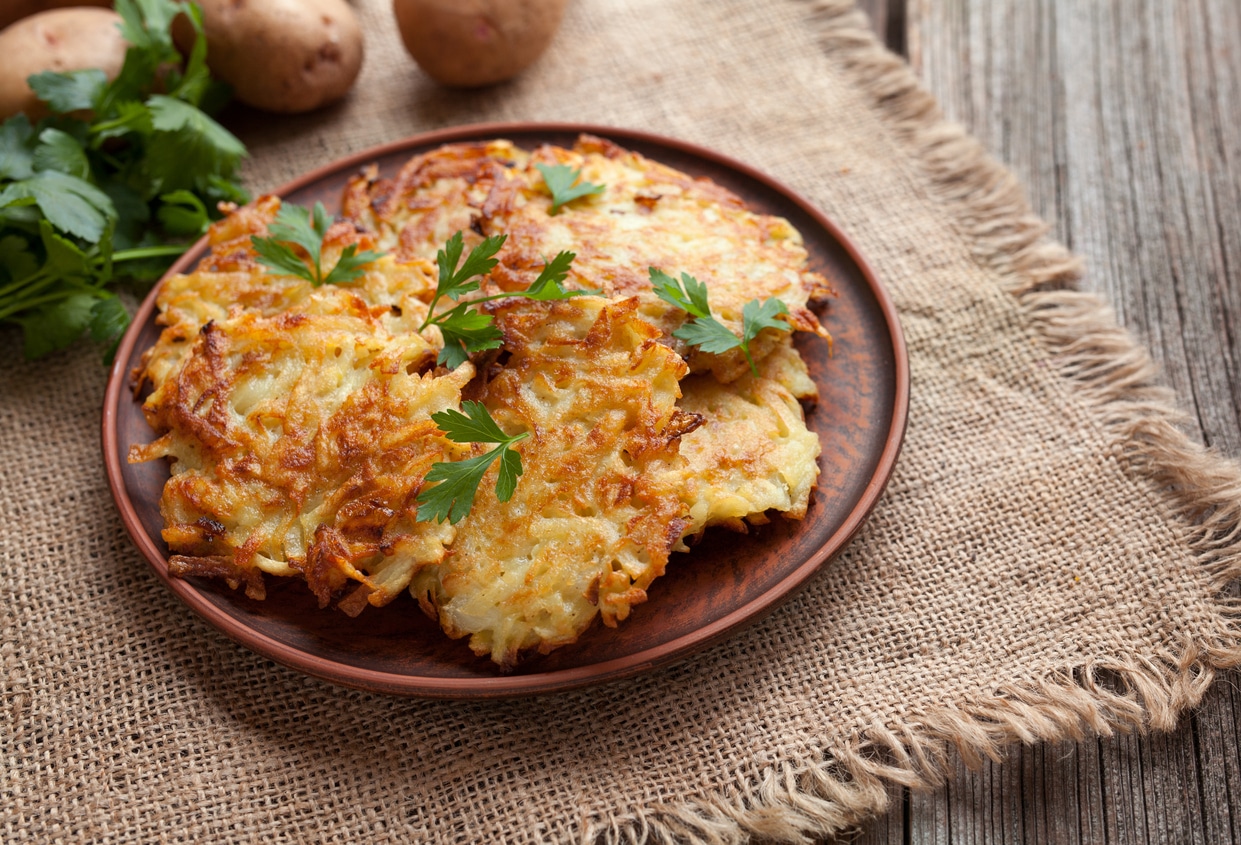
Make life easy! Fry these early in the day, steal a few for lunch, and leave them on the counter until dinner. There’s nothing to spoil.
- 1 potato per person (approximately)
- 1 lightly beaten egg for every 2 potatoes
- 1 large onion for every 5 potatoes
- Matzoh meal
- (sugar)
- salt & pepper (start with a tsp of salt and ¼ tsp pepper)
- Vegetable oil (Wesson)
- Peel and rinse potatoes and hack them into medium-small sized chunks (so they don’t get stuck on the processor blade). Put 4 to 5 chunks at a time in the bowl of the food processor with the chopping blade in. Process approx. 12 seconds into a chunky mush—careful not to over-process! Repeat with the rest of the potato pieces, dumping the mush into a large bowl as it is processed.
- (Time was, we grated by hand, which was a bloody mess).
- Peel, cut up, and process the onion. Add to the potato. Add the lightly beaten egg, salt, and pepper. Add enough matzoh meal to absorb the liquid that’s immediately released by the potatoes. It will look sort of like oatmeal. Taste it. If it seems a little bitter, add about a half teaspoon of sugar. If it tastes bland, add a little more salt and pepper.
- Add oil about an inch deep in a large frying pan. Heat oil on high until water droplets dance on the surface when you flick in a drop or two (you can also test the oil by dropping in a bread cube. The oil’s hot when the bread bobs along on the surface and the oil is all fizzy around it.).
- Using a large serving spoon, drop a scoop of potato in the oil and flatten it a bit with the back of the spoon. They should be no larger than the size of a coaster. Add as many scoops as are comfortable in the pan.
- Fry until light golden brown and flip. When the second side is lightly browned, move the batch to a wire rack or brown bags to drain (or paper towel, but brown bags absorb better). As the potato batches are finished, you can line them up on their ends, like oreos in a tray (just for space). When all the potatoes are fried, cover the tray with a paper towel or something so it won’t gather dust. You’ll refry them just before serving.*
Note: After you’ve cooked the first batch, you’ll probably notice more potato liquid gathering in the bottom of the mush bowl. Don’t panic or add more matzoh meal. Mix it up kind of casually and scoop from the top. (However! If your potato pancakes are falling apart when they hit the oil, you don’t have enough matzoh meal in the batter).
Note Note: a slotted spoon is really helpful when removing the potatoes from the hot oil—it lets you drain some of the fat back into the pan.
Refrying: After the gefilte fish is served (and likely rejected) put fresh oil in the frying pan and start it on low/medium heat (since you won’t be watching it and you don’t want it to burn). When you return to the kitchen, turn the heat up, flick it with water to check the temperature, and fry the potatoes again for about a minute per side—keep an eye on them! While they’re crisping up, you can put the rest of the meal on the table.
*Refrying latkes is another discovery that took me decades to discover. French fries are done the same way, cooked through, cooled, and refried to crisp. Leftovers (hah) should also be refried – not baked – they’ll taste far better.
Apple Sauce: It’s an essential side to latkes and refreshing when served with beef. Musselman’s makes an excellent sauce – add a hefty dose of cinnamon for a homier flavor.
Garlic Roasted Asparagus: Depending on the thickness of the asparagus, three to five stalks person should do it. Epicurious.com has a fine recipe. It’s delicious chilled, so there’s no last-minute fuss.
Mushrooms and Onions: An optional but delicious extra. Thinly slice a large onion, saute in olive oil until light brown, add sliced mushrooms, and cook over low heat until soft. Add salt and pepper to taste. This is another dish that can be done in advance and reheated. You might also mix it with the pan juices from the brisket for a divine gravy.
Dessert:

Go to the bakery and buy a sponge cake and macaroons. If you want to get fancy, get ripe strawberries, and dip them in melted semi-sweet chocolate. Set on parchment or waxed paper to cool. Do it yourself? There’s also a sponge cake recipe that’s always on the back of the Manischewitz Potato Starch container (or maybe it’s the cake meal container. I forget).
Tea: Coffee is not served after this meal because most people drink it with milk or cream. Besides! Tea is an old-world tradition.
Now back to the service….
Chag Pesach Sameach! Happy Passover.
End note: While I use my mother’s recipes, for many, Joan Nathan’s Jewish Holiday Cookbook is considered the bible. She covers the basics of every feast, and while I might quibble here and there, the guidance is excellent, and the results are generally delicious.
Read Next:
Spring Fashion: For Easter, Weddings, and More
5 DIY Easter Crafts To Do With Grandkids
Handbag Trends for Spring 2023
The post Seder Made Easy (You Don’t Have to Be Jewish) appeared first on Prime Women | An Online Magazine.

Leave a comment